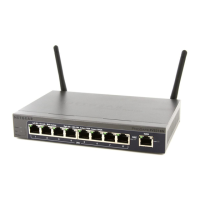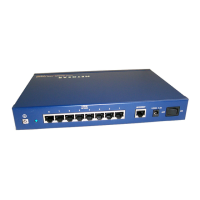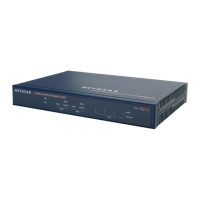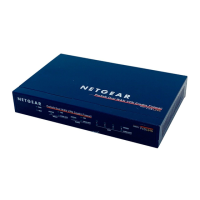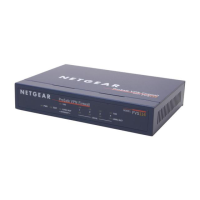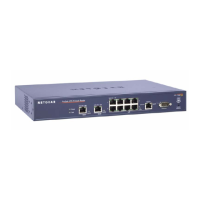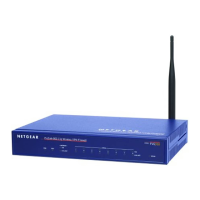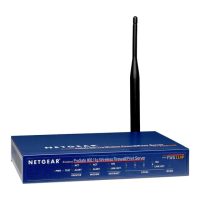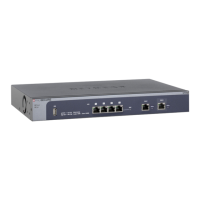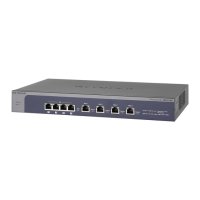IPv4 and IPv6 Internet and Broadband Settings
38
NETGEAR ProSAFE VPN Firewall FVS318G v2
Your configuration is saved.
Configure the IPv6 Internet Connection and WAN Settings
The nature of your IPv6 network determines how you must configure the IPv6 Internet
connection:
• Native IPv6
network. Your network is a native IPv6 network if the VPN firewall uses an
IPv6 address and is connected to an IPv6 ISP and if your network consists of IPv6-only
devices.
• Isola
ted IPv6 network.
If your network is an isolated IPv6 network that is not connected
to an IPv6 ISP, you must make sure that the IPv6 packets can travel over the IPv4
Internet backbone; you do this by enabling automatic 6to4 tunneling (see Configure 6to4
Automatic Tunneling on p
age 47).
• Mixed network with IPv4 and IPv6 devices.
If your network is an IPv4 network that
consists of both IPv4 and IPv6 devices, you must make sure that the IPv6 packets can
travel over the IPv4 intranet; you do this by enabling and configuring ISATAP tunneling
(see Configure ISATAP Automatic Tunneling on p
age 48).
A network can be both an isolated IPv6 network and a mixed network wit
h IPv4 and IPv6
devices.
After you configure the IPv6 routing mode, you must configure the W
A
N port with a global
unicast address to enable secure IPv6 Internet connections on your VPN firewall. A global
unicast address is a public and routable IPv6 WAN address that can be statically or
dynamically assigned. The web management interface offers two connection configuration
options:
• Automatic con
figura
tion of the network connection (see Use a DHCPv6 Server to
Configure an IPv6 Internet Connection on p
age 40)
• Manual configuration of the ne
twork connection (see Configure a Static IPv6 Internet
Connection on page
42 or Configure a PPPoE IPv6 Internet Connection on page 44)
This section contains the following topics:
• Configure the IPv6 Routing Mode
• Use a DHCPv6 Server to Configure an IPv6 Internet Connection
• Configure a Static IPv6 Internet Connection
• Configure a PPPoE IPv6 Internet Connection
• Configure 6to4 Automatic Tunneling
• Configure ISATAP Automatic Tunneling
• View the Tunnel Status and IPv6 Addresses
• Configure Stateless IP/ICMP Translation

